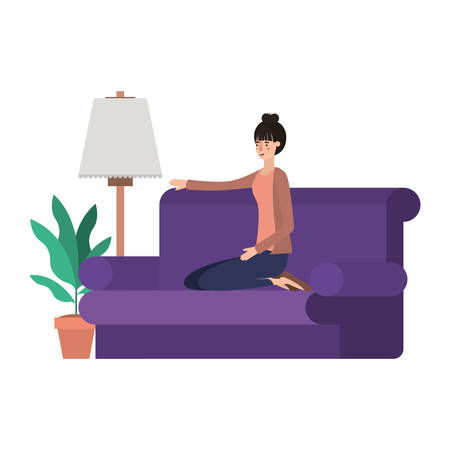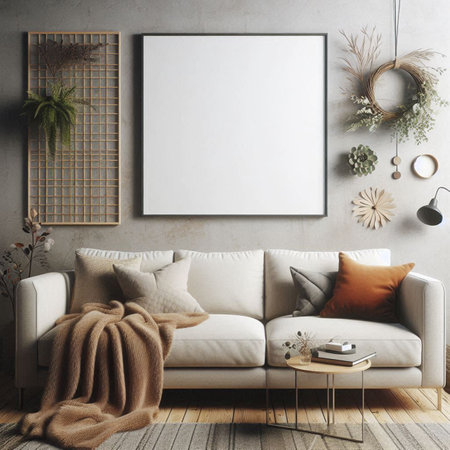Introduction to Minimalism
Minimalism, at its core, is about intentionally choosing simplicity over excess, both in our physical spaces and in our daily lives. In the American context, minimalism has evolved from a niche design trend into a broader lifestyle movement that resonates with families, young professionals, and retirees alike. The shift towards minimalism reflects growing awareness around the impact of clutter on mental health and overall well-being. As Americans juggle busy schedules, consumer-driven pressures, and constant digital distractions, the appeal of a simplified space—free from unnecessary possessions—has become more relevant than ever. Over the past decade, popular culture icons like Marie Kondo and movements such as “The Minimalists” have inspired countless households to reimagine what truly adds value to their lives. From suburban homes to urban apartments, people are discovering that having less often means enjoying more: more calm, more focus, and more time for what matters most.
2. The Psychological Benefits of a Clutter-Free Space
When life feels overwhelming, your environment can either add to your stress or help soothe it. Simplifying your home by embracing minimalism isnt just about having less stuff—its about creating a sanctuary for your mind and spirit. Research has shown that cluttered spaces can elevate cortisol levels, the hormone linked to stress, making us feel tense and distracted. In contrast, a tidy and organized space invites calmness and clarity, allowing us to focus on what truly matters.
Imagine walking into a living room where every item serves a purpose and nothing feels out of place. This kind of intentional simplicity helps reduce decision fatigue—the mental exhaustion that comes from making too many choices. Instead of being bombarded by visual distractions, your mind is free to rest, think creatively, or connect with loved ones.
| Benefit | Description |
|---|---|
| Reduced Stress | A decluttered space lowers anxiety and creates a sense of control. |
| Improved Mental Clarity | Minimalist environments help you concentrate better and make decisions more easily. |
| Enhanced Emotional Well-Being | Surroundings that are calm and organized promote positive moods and self-esteem. |
For American families juggling busy schedules, homework, and work-from-home routines, these psychological benefits are especially valuable. Minimalism can transform daily chaos into peaceful order—making your home a place where everyone can recharge. By intentionally simplifying your surroundings, you’re not just tidying up; you’re giving yourself and your family the gift of emotional resilience and mental well-being.

3. How Environment Impacts Daily Life
Scientific research reveals a powerful link between our surroundings and our daily experiences. A well-organized, minimalist space does more than simply look tidy—it can actually shape the way we think, feel, and interact with others. Studies from leading universities like Princeton and UCLA have shown that clutter competes for our attention, draining mental energy and making it harder to focus. In contrast, simplified spaces help reduce cognitive overload, allowing both adults and children to concentrate better on tasks at hand.
Productivity in Action
When you clear away excess items and distractions, your brain is able to filter information more efficiently. This translates to improved productivity, whether youre working from home, helping kids with homework, or simply managing household chores. The physical act of organizing a room can even trigger a sense of accomplishment and motivation, setting a positive tone for the rest of the day.
Boosting Creativity
A minimalist environment doesnt mean sterile or empty—it means intentional. By keeping only what truly matters in your space, you create room for imagination to flourish. Research shows that visual calm allows the mind to wander in healthy ways, sparking new ideas and solutions. For families, this might look like an open play area with just a few favorite toys, giving kids the freedom to invent games rather than being overwhelmed by options.
Strengthening Family Connections
The benefits extend beyond individual well-being; simplified spaces foster stronger family bonds. Without the constant stress of clutter, theres more time and energy for meaningful conversations and shared activities. Minimalism also encourages collaboration—like deciding together which items are most important—teaching children lifelong skills about value and gratitude. In short, the science is clear: when we simplify our environments, we invite peace, creativity, and connection into our homes.
4. Minimalism and Family Life
Minimalism isn’t just for singles or couples—it can be a powerful tool for families seeking more harmony at home. In the fast-paced, consumer-driven culture of the U.S., families often find themselves overwhelmed by clutter, schedules, and mental noise. By embracing minimalism together, American households can create environments that foster calm, connection, and well-being. Here’s how:
Start with Shared Values
Begin by having a family conversation about what truly matters. Focus on experiences over possessions—like game nights, hikes, or movie marathons—which promote bonding and lasting memories. This collective understanding helps everyone get on board and feel invested in simplifying your space together.
Declutter as a Team
Make decluttering a family event rather than a chore assigned to one person. Set aside a weekend afternoon and tackle one room at a time. Encourage kids to choose which toys they genuinely love and donate the rest to local charities. This not only clears physical space but also teaches generosity and decision-making.
Organize Common Spaces
| Room | Minimalist Approach | Benefits |
|---|---|---|
| Living Room | Select multi-purpose furniture; limit decor to meaningful items | Easier cleaning, promotes relaxation |
| Kitchen | Keep countertops clear; store only essential tools and appliances | Simplifies meal prep, reduces stress |
| Kid’s Room | Create zones for play, sleep, and study; rotate toys/books seasonally | Encourages focus and creativity |
Create Simple Routines Together
Minimalism thrives on routine. Establish daily habits like tidying up before dinner or having a weekly “reset” session where everyone pitches in to restore order. These small practices keep clutter at bay while reinforcing teamwork and responsibility.
Emphasize Experiences Over Things
Shift gift-giving traditions toward experiences—think trips to the zoo, cooking classes, or family picnics in the park. This change not only minimizes clutter but also nurtures stronger relationships through shared adventures.
The Ripple Effect: Calmer, More Cohesive Homes
When families unite around minimalist principles, the benefits go beyond clean counters. You’ll likely notice less bickering over lost items, smoother mornings, and more space (physically and emotionally) for what matters most—each other.
5. Overcoming Emotional Attachments to Stuff
Letting go of possessions is often more than a practical decision—it’s an emotional journey, deeply intertwined with our memories and sense of identity. In the American context, where heirlooms, childhood keepsakes, and family treasures are cherished, the process of decluttering can stir up feelings of nostalgia, guilt, or even anxiety. Yet, embracing minimalism doesn’t mean discarding your past; rather, it’s about honoring what matters most while creating space for well-being.
Understanding Emotional Bonds
Our stuff tells stories: Grandma’s quilt, your child’s first drawing, or trophies from high school all carry emotional weight. These items connect us to loved ones and significant moments in our lives. Recognizing this emotional attachment is the first step to mindful decluttering. Ask yourself: Is this item bringing me joy now, or am I holding on out of habit or obligation?
Culturally Relevant Letting-Go Strategies
In American homes, traditions like garage sales or donation drives aren’t just about clearing space—they’re about community sharing and giving objects a second life. Consider organizing a family “memory night,” where everyone shares stories about sentimental items before deciding together which ones to keep or let go. This not only respects personal and family memories but also makes decluttering a bonding experience.
Preserving Memories Without the Clutter
If parting with an object feels impossible, try taking photos of meaningful items and creating a digital scrapbook. This way, you preserve the memory without sacrificing physical space. For particularly special pieces, consider repurposing—turning an old T-shirt into a pillow or framing a letter from a loved one. These creative solutions allow you to celebrate your history while still moving toward a simpler, more peaceful environment.
Letting Go with Compassion
Remember, it’s natural to feel resistance when letting go. Be gentle with yourself and others in your household—especially children or elders who may find change difficult. Approach the process as an act of self-care and family care, focusing on how a simplified space can free up energy for connection and well-being. Minimalism isn’t about having less; it’s about making room for what truly matters in your American home.
6. Implementing Minimalism the American Way
Adopting minimalism in the context of an American household isn’t about empty spaces and bare walls—it’s about creating a home that reflects your values, supports your well-being, and fits your lifestyle. Here are some practical steps to help you bring the psychology of minimalism into everyday life, tailored specifically for families and individuals living in the U.S.
Start with a Family Conversation
Minimalism is most successful when everyone’s on board. Gather your family or housemates and discuss what “enough” means to each person. Highlight how a simplified space can free up time, reduce stress, and even save money. This shared vision helps create motivation and accountability as you move forward.
Declutter with Purpose
Begin by choosing one area—such as the entryway or a kitchen counter—and sort items into categories: keep, donate, recycle, or toss. Americans often accumulate duplicates (think water bottles or kitchen gadgets), so pay special attention to unnecessary multiples. For sentimental items, limit yourself to one small memory box per person.
Donate What You Don’t Need
Giving back is woven into American culture. As you declutter, set aside gently used clothes, toys, books, and household goods for donation. Local charities like Goodwill, Habitat for Humanity ReStores, or community shelters will put your excess to good use and make letting go feel meaningful.
Organize with Everyday Life in Mind
Choose storage solutions that work for your routine: baskets by the front door for keys and mail, labeled bins in the pantry, or hooks in the garage for sports gear. Make sure everything has a designated spot—this reduces clutter build-up and helps everyone stay organized without constant reminders.
Create Maintenance Habits
Minimalism isn’t a one-time event; it’s an ongoing process. Schedule regular “reset” sessions—perhaps monthly or at the start of each season—to revisit clutter hotspots. Teach kids to donate old toys before birthdays or holidays, and encourage family members to do seasonal wardrobe checks.
Embrace Experiences Over Things
Culturally, Americans are shifting toward valuing experiences—family outings, vacations, or local adventures—over accumulating more stuff. Redirect gift-giving traditions toward memberships (like museums or zoos), classes, or experiences that create memories instead of clutter.
By thoughtfully implementing these strategies, your household can enjoy the psychological benefits of minimalism—less stress, more connection, and a home that truly feels like a sanctuary.
7. Sustaining Well-Being Through Minimalism
Maintaining a minimalist lifestyle is not just a one-time project—it’s an ongoing journey that continually nurtures mental health and family harmony. When families consistently embrace minimalism, they create spaces that are free from unnecessary distractions, making it easier to focus on what truly matters: quality time, meaningful connections, and personal growth. Over time, this simplicity transforms daily routines, helping everyone feel less overwhelmed by clutter or obligations.
Building Lasting Habits
Integrating minimalism into everyday life doesn’t have to be drastic. Small, regular efforts—like seasonal decluttering or mindful purchasing—help reinforce habits that keep your home and mind clear. These simple actions teach children the value of intentional choices and provide parents with an ongoing sense of control and calm in their environment.
The Ripple Effect on Family Well-Being
As minimalism becomes part of the family culture, its benefits multiply. Shared spaces become more welcoming, daily routines run smoother, and stress levels decrease. This positive atmosphere supports open communication and deeper emotional bonds. Children learn resilience and adaptability as they grow up valuing experiences over possessions.
Encouragement for Every Step
No family achieves perfect minimalism overnight—and that’s okay! Celebrate progress, not perfection. Each drawer organized or unused item donated is a step toward greater well-being. Encourage each other to stay curious about what you truly need, regularly reassess what serves your happiness, and remember that minimalism is ultimately about creating room for joy.
By consistently practicing minimalism, families can foster mental clarity and emotional stability long-term. The journey may have its challenges, but the rewards—a calmer home, stronger relationships, and a happier outlook—are well worth it.


